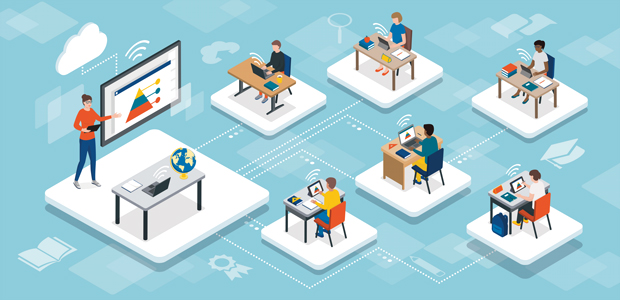
Why tech is vital in children’s development in and out of the classroom
In response to the pandemic, the traditional schooling method was transformed. As children transitioned to home learning, technology had to step up its game to support parents and teachers in continuing their children’s education at a regular pace.
Virtual classrooms were required for all stages in the education system as teachers and parents navigated this change. 80% of parents felt like being online helped their child with schoolwork or homework and more than six in 10 thought it helped their children to learn a new skill or develop creative skills, leaving no doubt this should continue to play an important role in the UK curriculum.
The positive role that tech played in the pandemic didn’t just stay in the classroom. With a smaller variety of activities available to do in lockdown, children’s screen time increased in their spare time, with 97% of 5-15 year olds spending time online on any device in 2020.
While this increased screen time may seem worrying to parents, the pandemic has in fact allowed valuable time for children to learn and accelerated their development considerably. Here’s why:
Allowing children flexibility in their learning
Every child learns in their own unique way, and online learning is a great opportunity for children to experiment with what works best for them, in a way they may not have been able to in a classroom setting. While some children may prefer to read and write notes, for example, others may enjoy being more creative and creating mind maps or drawings. Both options allow children to learn and retain information, but not every child is suited for both.
It also allows children flexibility in when they learn. Many classes can be recorded and uploaded online so children can re-access them and go over notes to fill in any gaps they may have missed. Children are therefore able to benefit from engaging live lessons, where they can interact with the teacher and peers, as well as recorded lessons, where they can take their time to ensure they have taken everything in.
This flexibility in learning is great for allowing children the time and opportunity to take breaks, whether that’s to exercise, have a snack, or interact with parents and siblings. This way, they can stay engaged and productive, with minimised in-class disruptions.
Teaching crucial computational and technical skills
While most children were familiar with some type of digital screen, they very rarely, pre-pandemic, used the internet and computers in the way adults do in the workplace. From learning to type on a keyboard and accessing information online, to using video conferencing platforms and communicating with peers in a more professional way, online learning has certainly increased the technological skills and capabilities of the younger generation. With the business world evolving to include more virtual teams and platforms, learning these skills at a young age will benefit future careers and equip them for a workplace.
Teaching children a sense of responsibility
At school, children are often cared for by their teacher, monitoring them to class on time, ensuring they complete their work and generally keeping them on-track all throughout the day. While they may have parents at home to do this, they were often balancing their own workload, meaning online learning has allowed children more of an opportunity to take responsibility for their own timetable and classes.
It may appear daunting at first, but children can adapt quickly and grasp the move to being accountable for themselves and their work. They can begin to understand the differences between putting hard work in and missing lessons, and gain independence in their learning rather than relying on classmates.
Building stronger social skills
While many may think taking a child out of a busy classroom will leave them feeling isolated, online learning and online communication platforms offer many opportunities for social interactions. Whether it’s in breakout sessions, asking questions during virtual classes, or even 1-1s with teachers or friends, online interactions such as these can greatly build social skills and confidence in children. Surveys have shown that many schools have felt that relationships with parents had improved and parents felt involved in their children’s learning.
Out of the classroom, according to Ofcom, 97% of children aged 5-15 used video sharing platforms, a way of connecting with others, with 47% of parents reporting it helping their child to build or maintain friendships. We can only predict that these deep connections during the pandemic built online will be replicated in the real world.
Allowing for real-time feedback
A great benefit for both children and parents, online classrooms allow the opportunity for immediate feedback as opposed to waiting for parent-teacher meetings or for homework to be graded and redistributed. This can allow parents to understand how their children are progressing, and for children to recognise where weaker or stronger areas might be, and allow them to develop at a faster pace.
There is no doubt that the transition to online learning was a difficult process, but now that children, parents and teachers have become accustomed to the technology, it is important to continue the practice in a healthy manner, taking advantage of the invaluable skills learned at an increased pace over the last year.
Carrying on with virtual learning and use of tech, even when children have fully returned to school, can only continue to accelerate their development, which will be a great asset for their futures, opening up possibilities within the workplace they may not have had.

